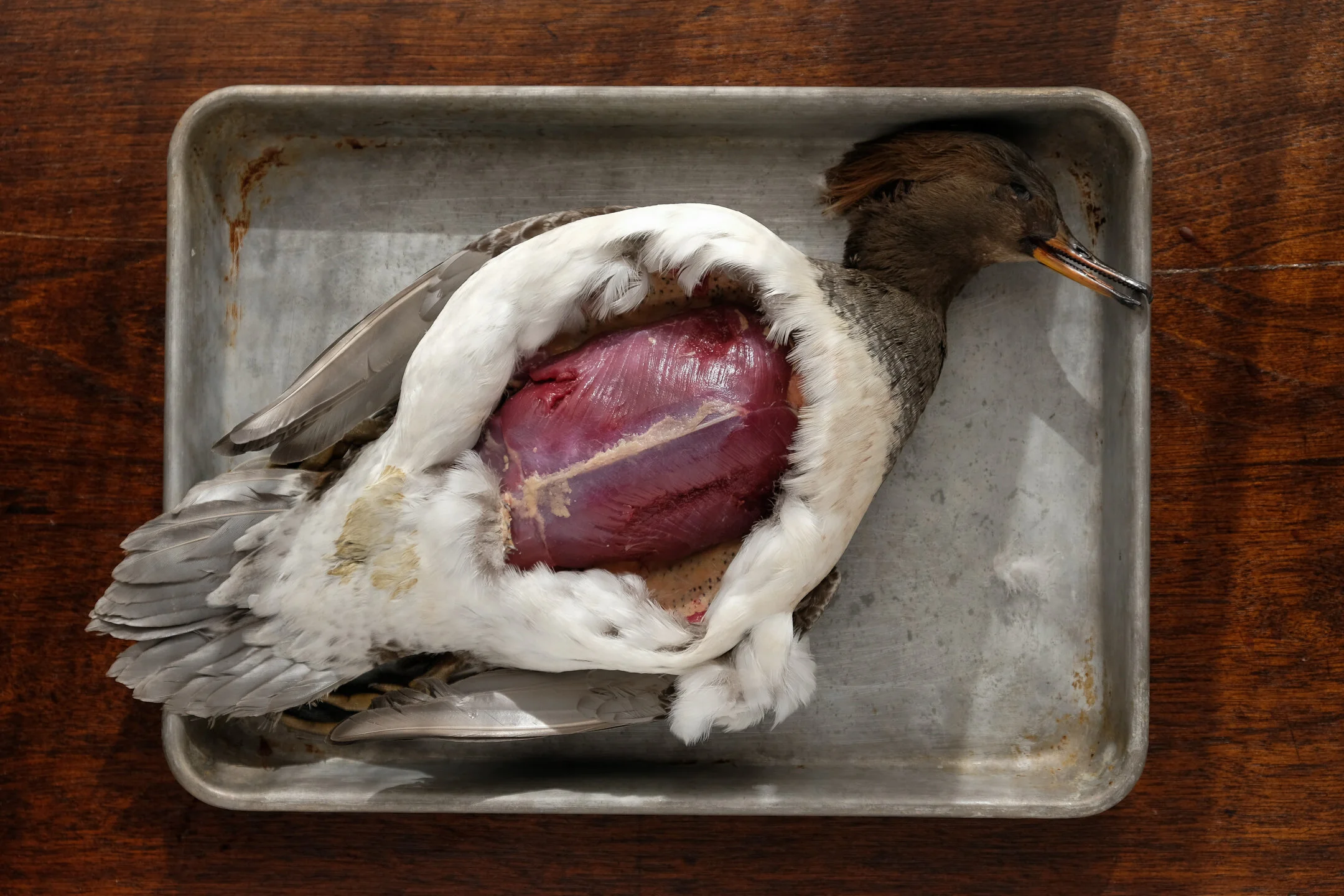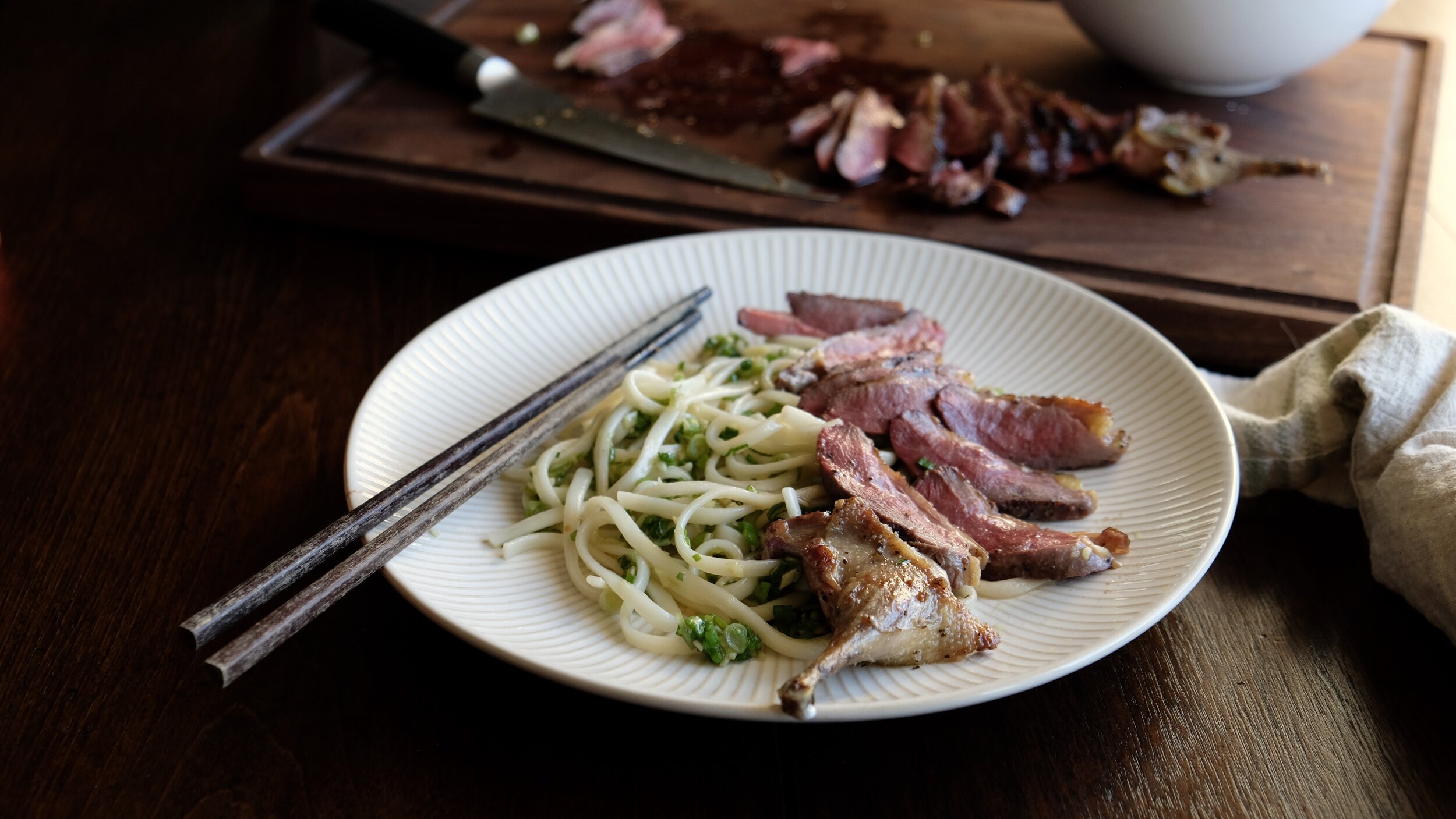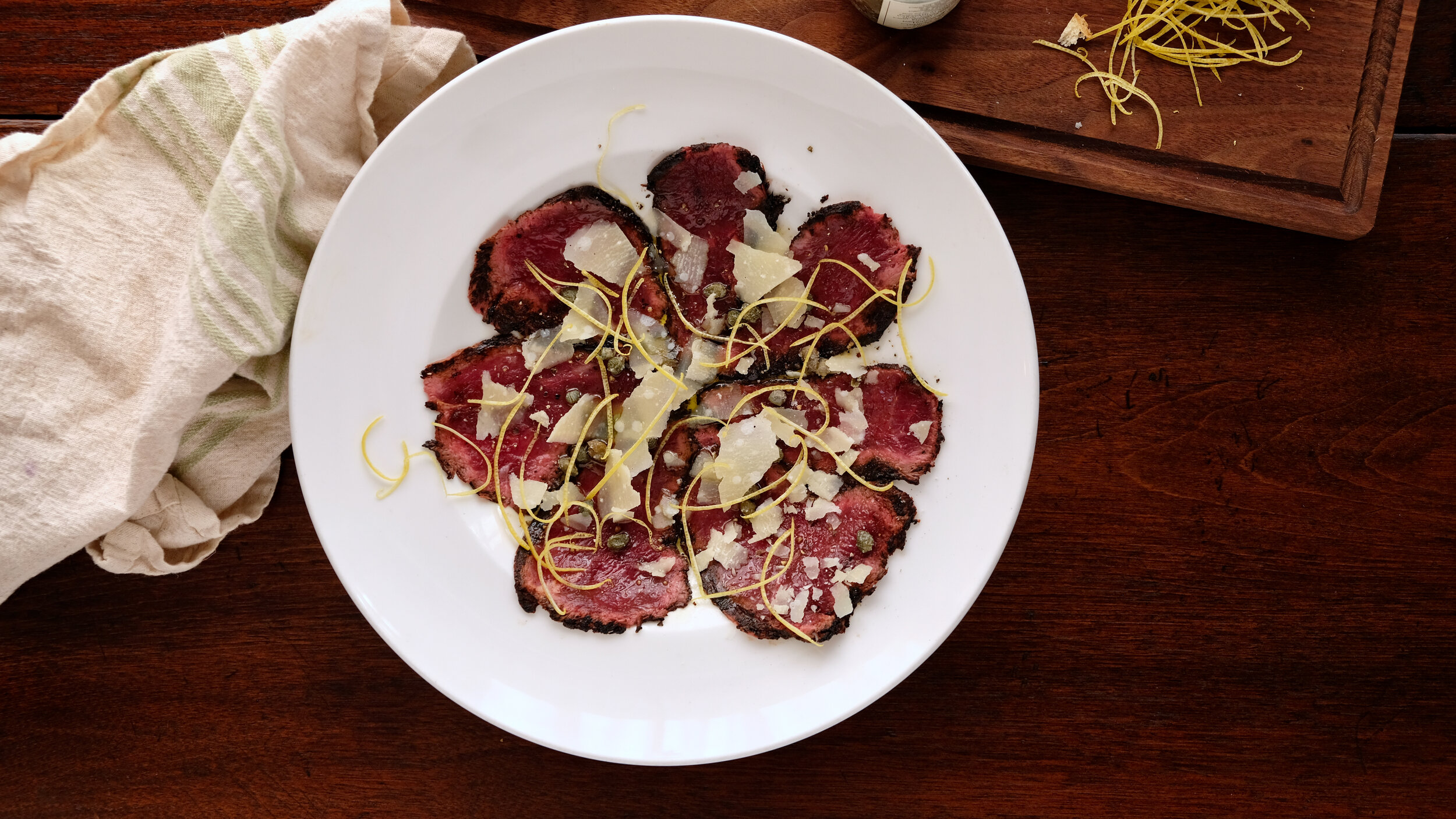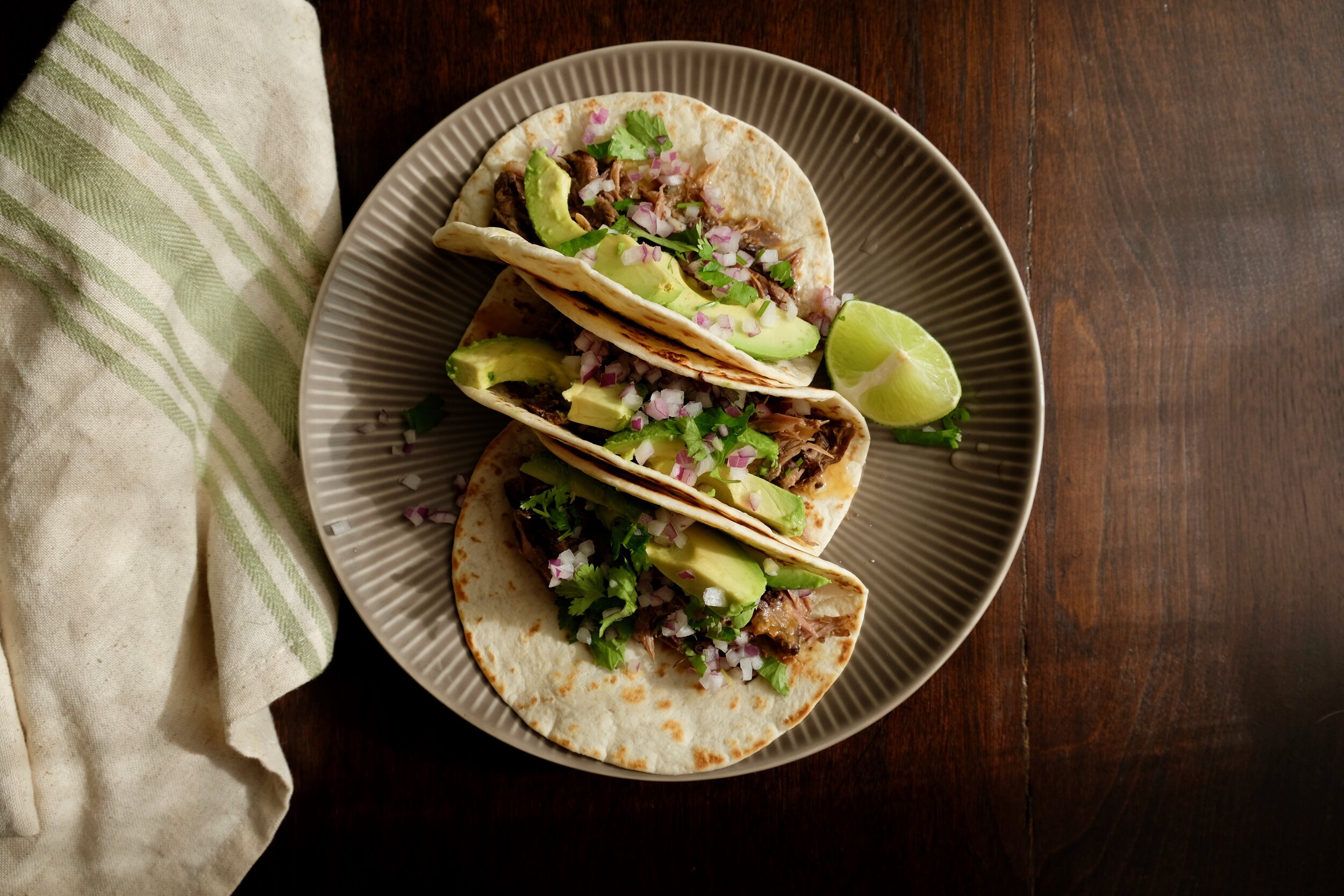Goose & Venison Pho

Duck hunting can be brutal.
Early mornings, extreme cold, wind, rain, ice or snow. Too much gear or not enough of it. Somehow, some way, someone’s going to get wet. Leaky waders, unreliable outboards, numb hands....
And then the sun breaks the horizon, the birds take wing, and discomfort takes a back seat to wide-eyed excitement as the ducks start dumping into the decoy spread.
Sometimes.
Our first season duck hunting, we learned a lot. Sometimes (more often than we’d care to admit), part of learning meant sitting in a blind that was empty of birds. We’d kill time for a while, and then, once we knew the birds had settled in for the afternoon, we’d lug the decoys and guns back up the hill. On the way back into town, we’d throw our waders into the back of the truck and stop at the local pho joint for a hot bowl of soup. Nothing salves the sting of getting skunked like a fragrant bowl of pho to warm you from the inside out.
We don’t hunt that spot anymore. I don’t miss it, not really. But I do miss those pho mornings, when we’d sit around a table loaded down with gloves and hats and bowls and plates of herbs, and we’d be so absorbed in our meal, we wouldn’t even talk about ducks.
There’s not much better than that.
Goose & Venison Pho
Prep time: 1 hour active, 2 days total
Yield: About 3 gallons
This has become a staple in our household, ever since we figured we could pressure can the stock and have pho anytime. Make a big batch and have it ready for cold mornings after a hunt or a night with too much bourbon.
Save your goose and duck carcasses (& ask your friends for theirs!) and you’ll have more than enough to work with. Carcasses should be clean, with organs, fatty skin, and feathers removed. Give them a rinse and let them drain before you work with them. Geese have more of a clean, “beefy” flavor while ducks have a slightly darker, earthier flavor. Duck and goose feet, while technically optional in this recipe, are rich in collagen and are what gives the stock the distinct, silky mouthfeel of a good consomme. We save goose and duck feet all season in the freezer for just this purpose. Again, ask your friends for theirs- they might think you’re crazy, but if they don’t think that already, are they really your friends?
Ingredients:
4 goose or 8 duck carcasses (or any combination of)
½ gallon ziploc bag of goose or duck feet
1 large onion
1 large piece of ginger
Method:
Place cleaned carcasses and feet on a baking sheet or roasting pan. Be sure to give the feet a few good whacks with a heavy cleaver- this will allow the collagen to render into the stock. If necessary, cut carcasses into smaller pieces so it all fits on the sheet. Roast at 350-375F for 45-90 minutes until the bones are a crisp, dark brown. Do not allow them to burn. Remove from oven and place bones in large stockpot, discarding rendered fat and juices.
Halve the onion and chunk of ginger and char the cut side of each in a pan or on the grill. Get a nice dark brown color on them. Put them in the stock pot with the bones.
Fill stock pot with water, leaving 2-3 inches to the brim. Bring to a steady simmer, adjusting heat as needed. Once at a simmer adjust heat so that only one or two bubbles come to the surface every second or so. Allow to slowly simmer for 4 hours minimum, but overnight is even better. The longer you let it go, the more extracted the flavor will be.
Once ready, strain stock through fine mesh chinois and discard bones, feet, ginger & onion. Allow stock to settle for a few minutes and skim the fat and scum from the top. Return to stock pot and bring it to a steady simmer, continuing to skim the top of the stock until it has reached the desired clarity.
Optional: for a clearer stock, whip a few egg whites together and while the stock is at a very slow simmer, pour the whites into the stock, the small particles will stick to the whites as they cook and the entire egg white can be skimmed out.
Add spices:
I use the following mix, but everyone has their own:
3 cinnamon sticks (preferably Saigon cinnamon)
8 star anise pods
~24 green cardamom pods
6 black cardamom pods
½ cup coriander seeds
12 cloves, whole
⅛ cup fennel seeds
optional: use a cheesecloth and butcher twine and tie spices it into a little bag before placing in broth.
Add these to the stock and simmer until broth is fragrant, around one hour. Too long and I find the stock becomes a bit overwhelming. Remove spice bag or strain out spices with mesh sieve. For the final seasoning, add fish sauce, sugar, salt, and MSG. Season lightly and make adjustments. I generally use around ¼ cup fish sauce, ½ cup sugar, 1 tbsp MSG, and salt to taste.
If you own a pressure canner, can at 10 lbs pressure (adjust for altitude if needed) for 20 minutes in pint jars or 25 minutes in quart jars. DO NOT HOT WATER BATH CAN STOCK.
To serve:
Soak rice noodles in warm water, strain and dunk in boiling water for a few seconds. Separate noodles into large bowls. Top with sliced, braised or confit meat (optional) and pour hot stock over the meat, top with garnishes, and consume.
Toppings & Garnishes:
The thai basil, cilantro, onion and lime are cornerstones in my opinion. Use what you have and try different things.
thai basil
cilantro
thinly sliced onion
scallions, chives, or garlic chives
culantro
shiso (perilla)
mung bean sprouts
mint
lime
hot peppers (jalapeno/thai chili)
hoisin sauce
sriracha
Meat:
The options here are endless. Here are a few of my favorites:
Shaved, lightly charred goose or duck breast
Duck or goose confit
Hoisin-braised venison shank
Raw, shaved venison tenderloin
Goose or duck hearts, sliced thin


































